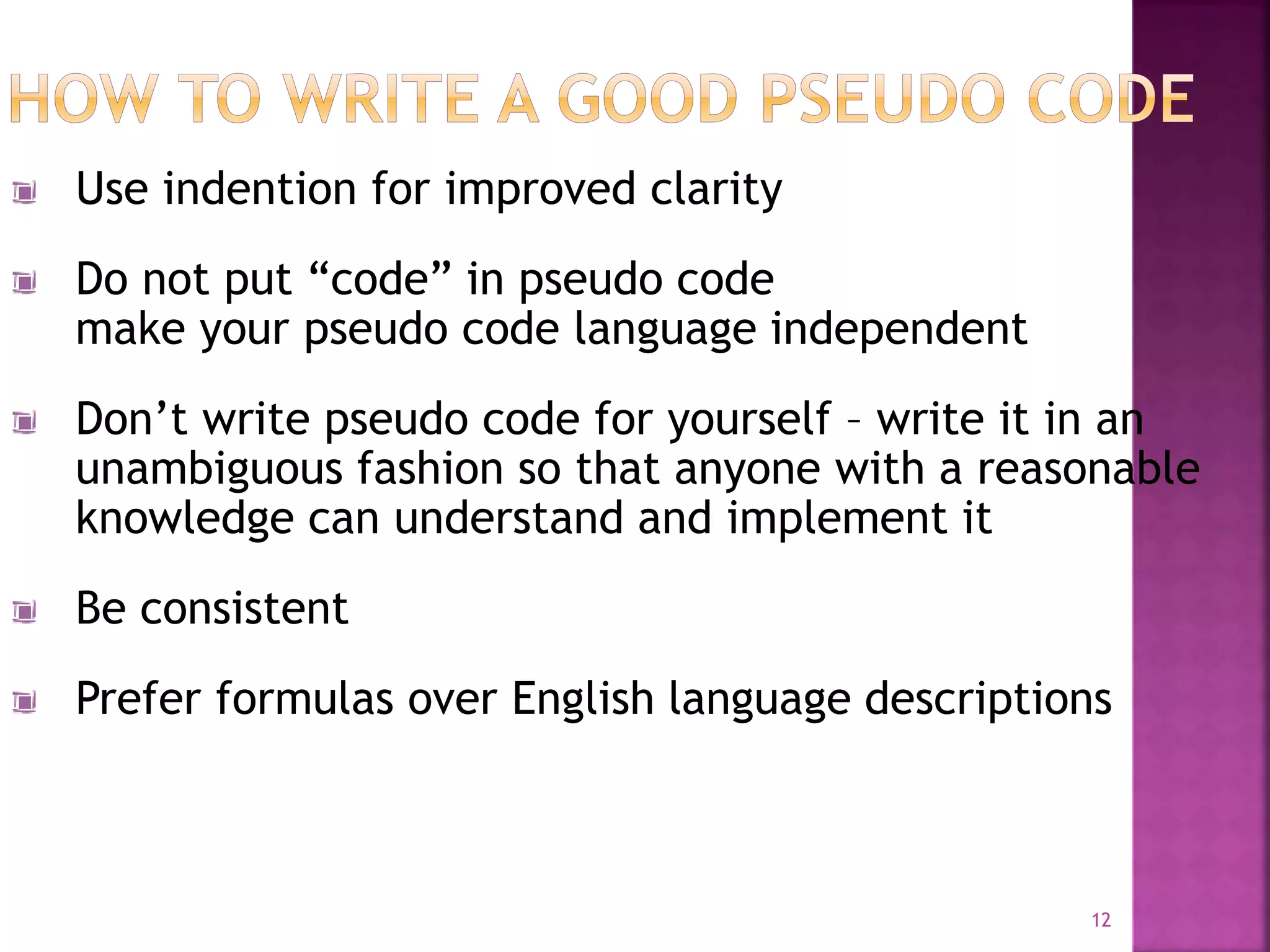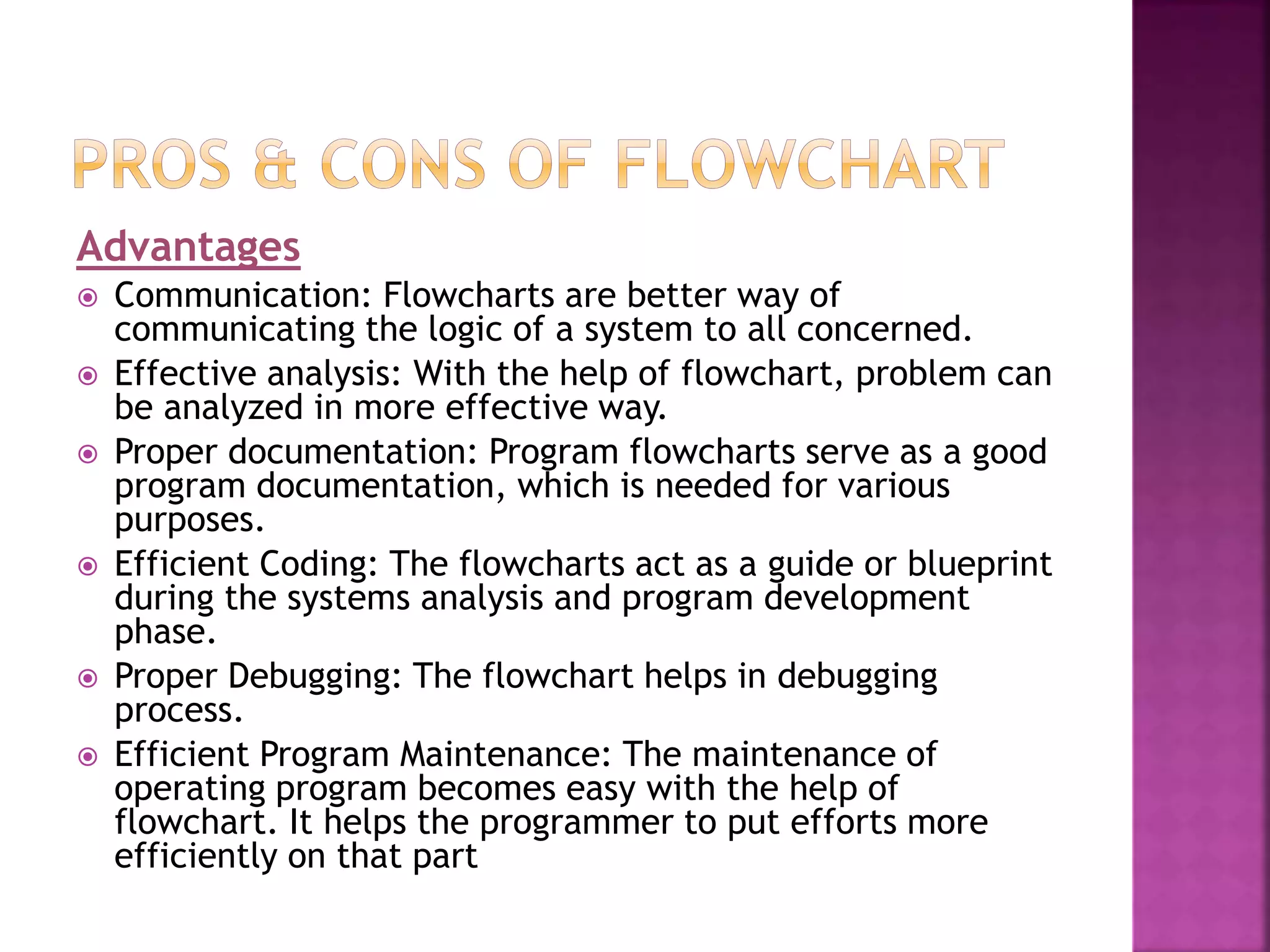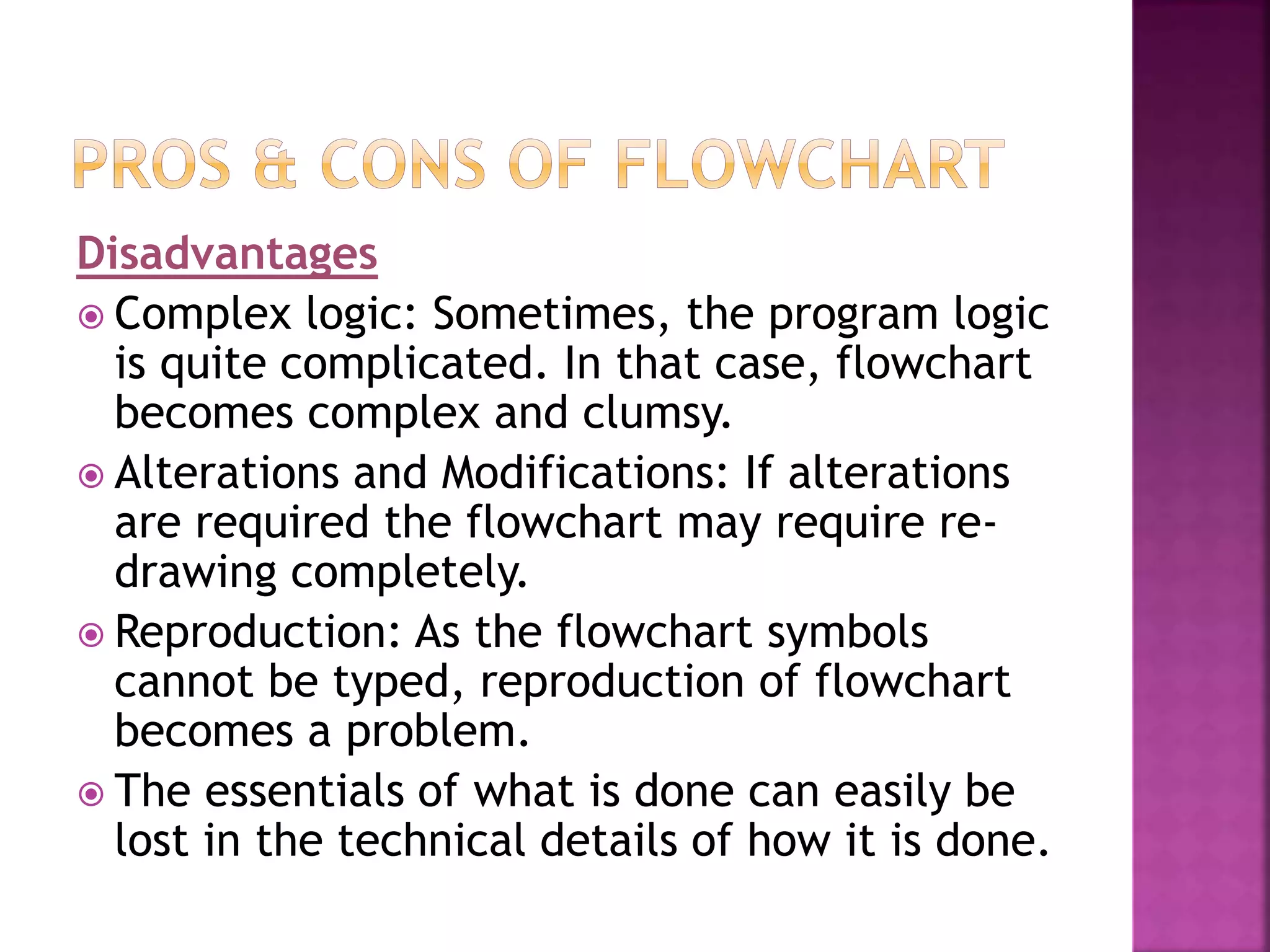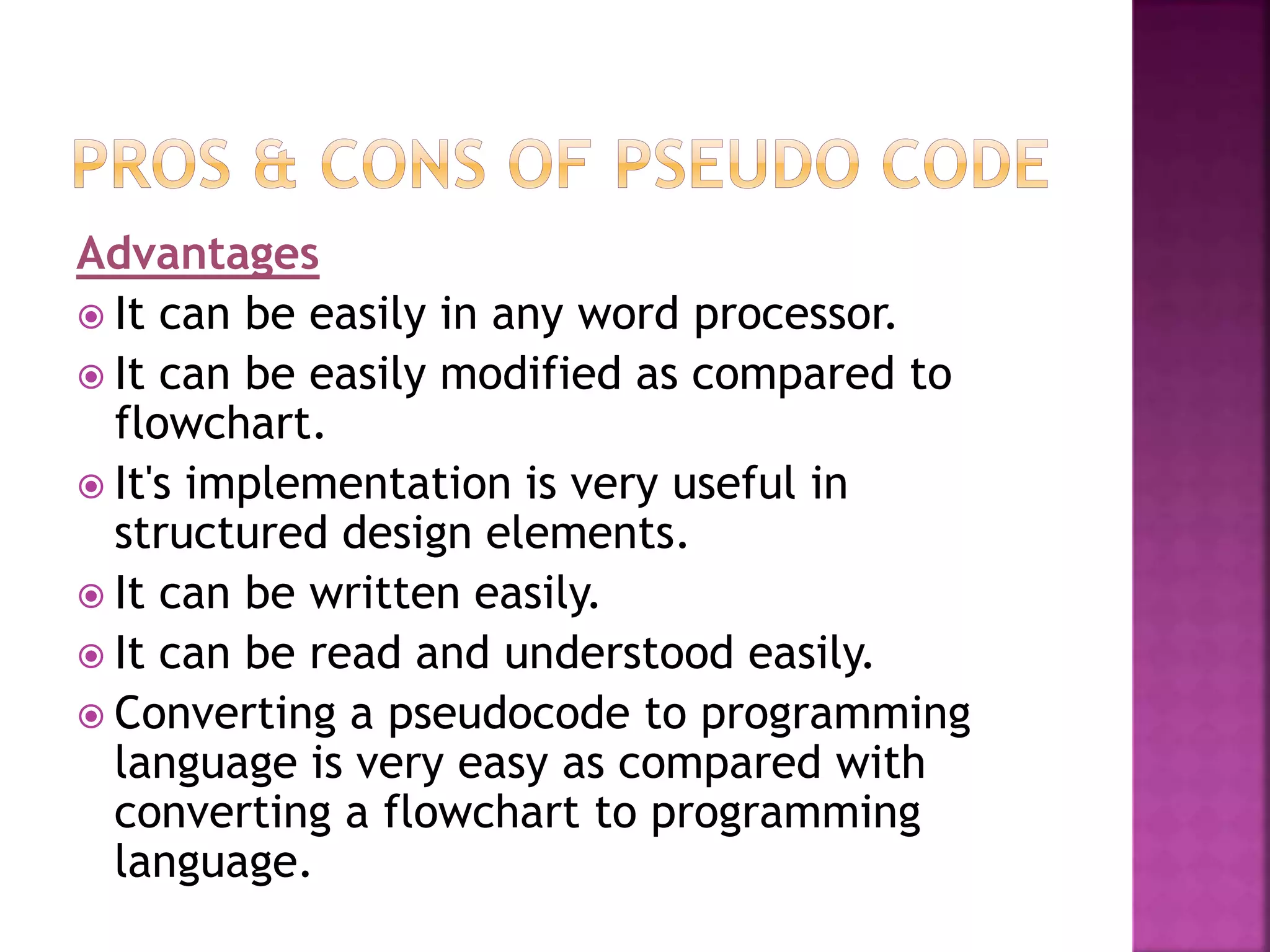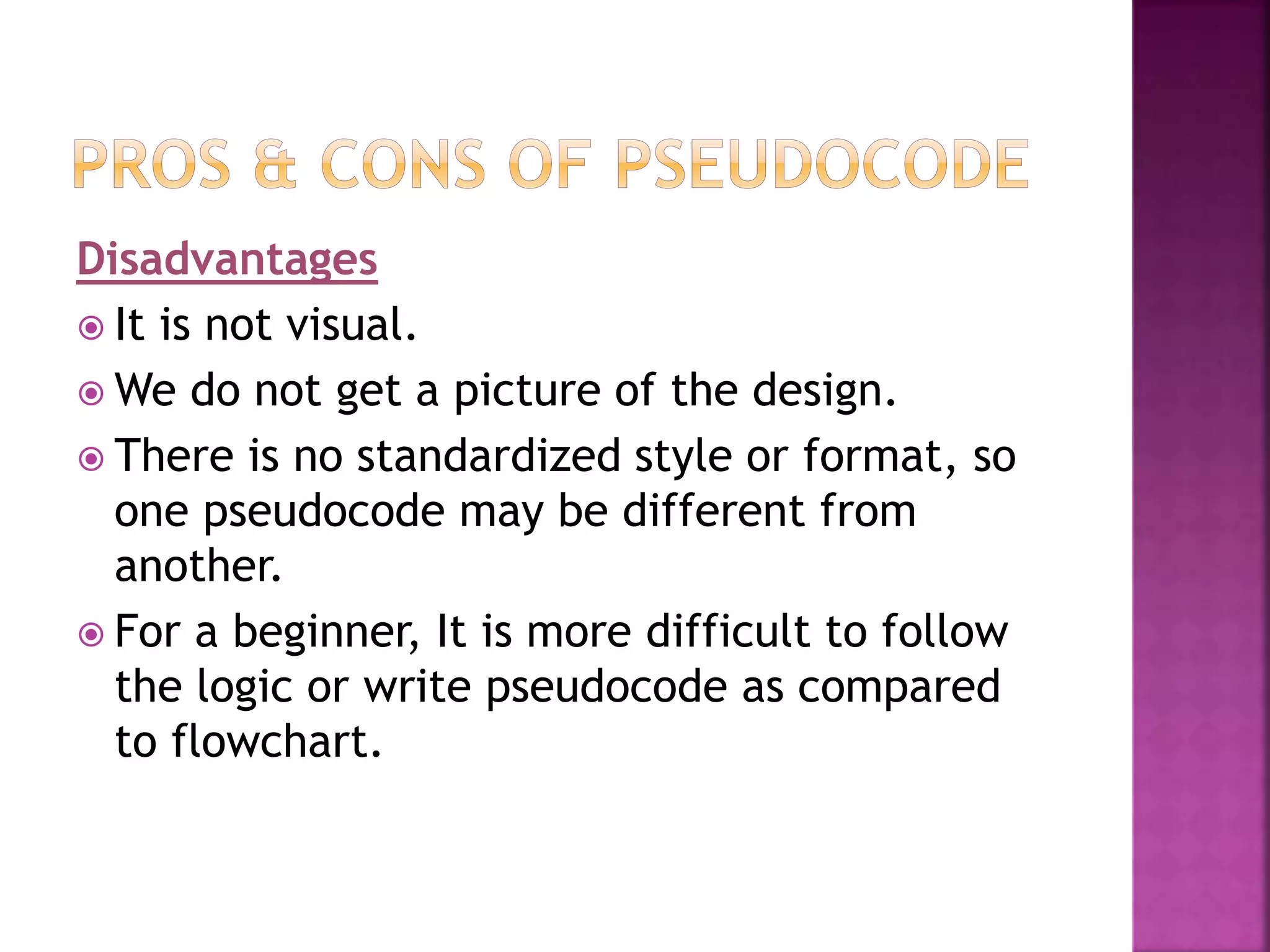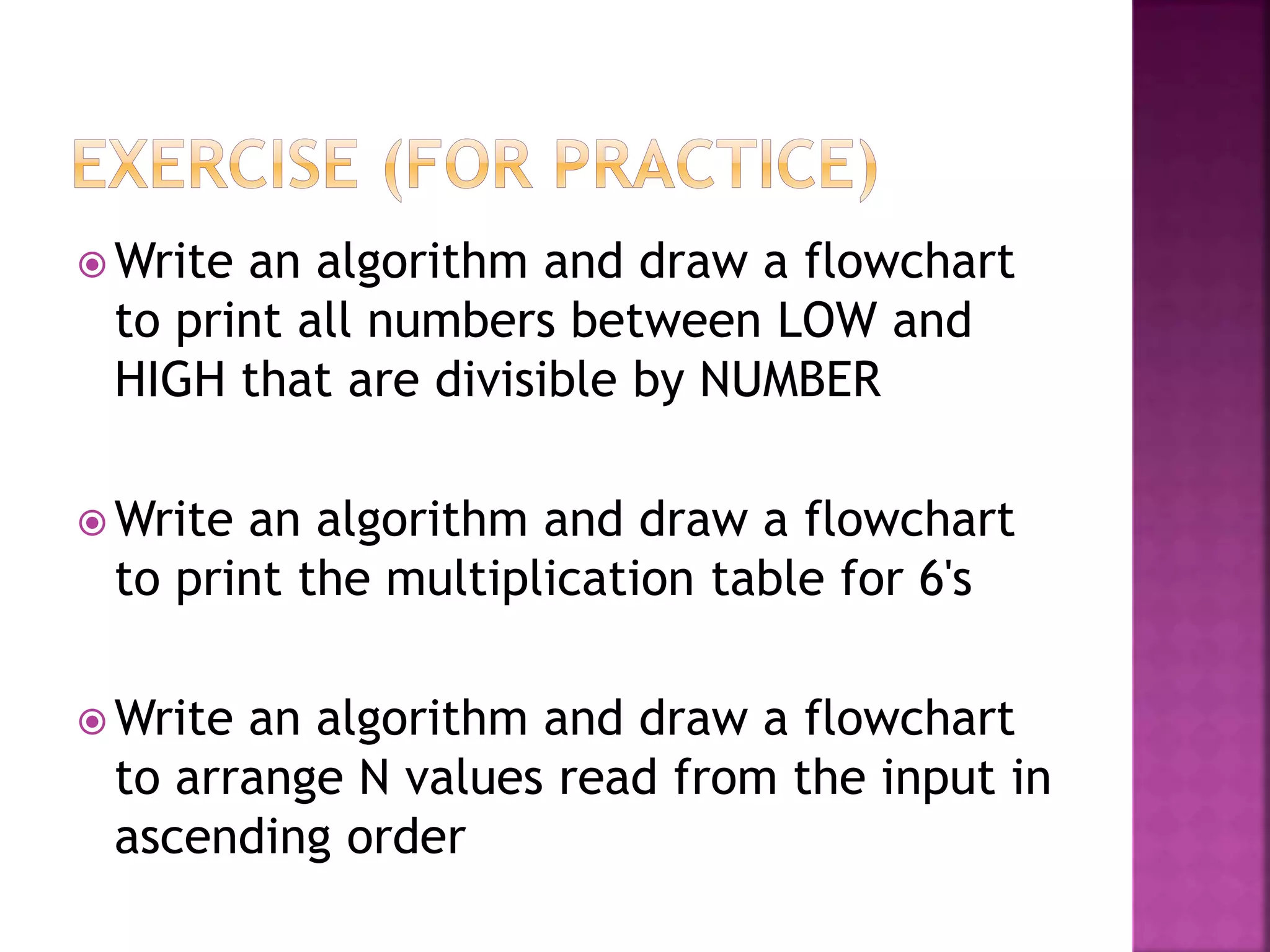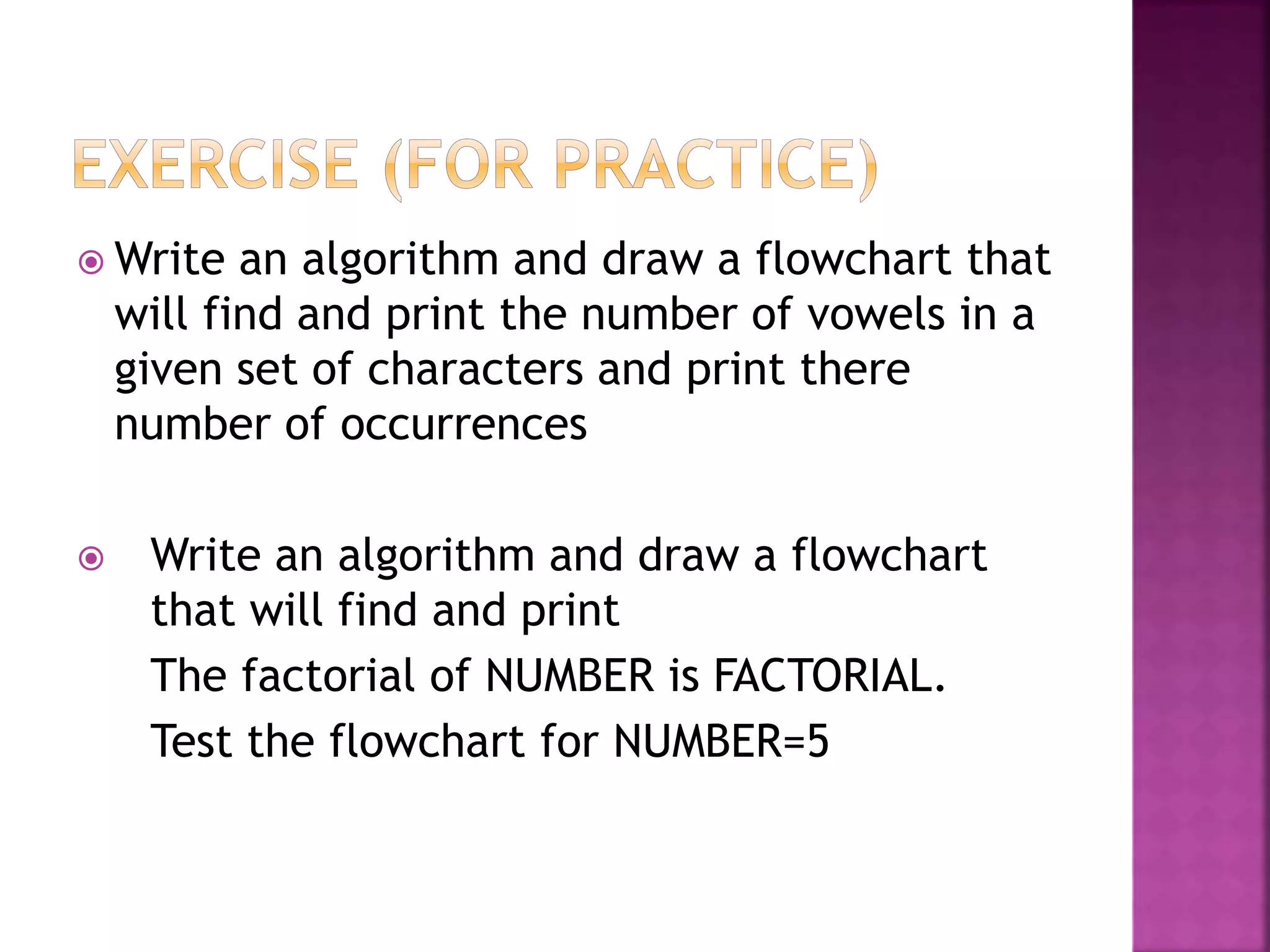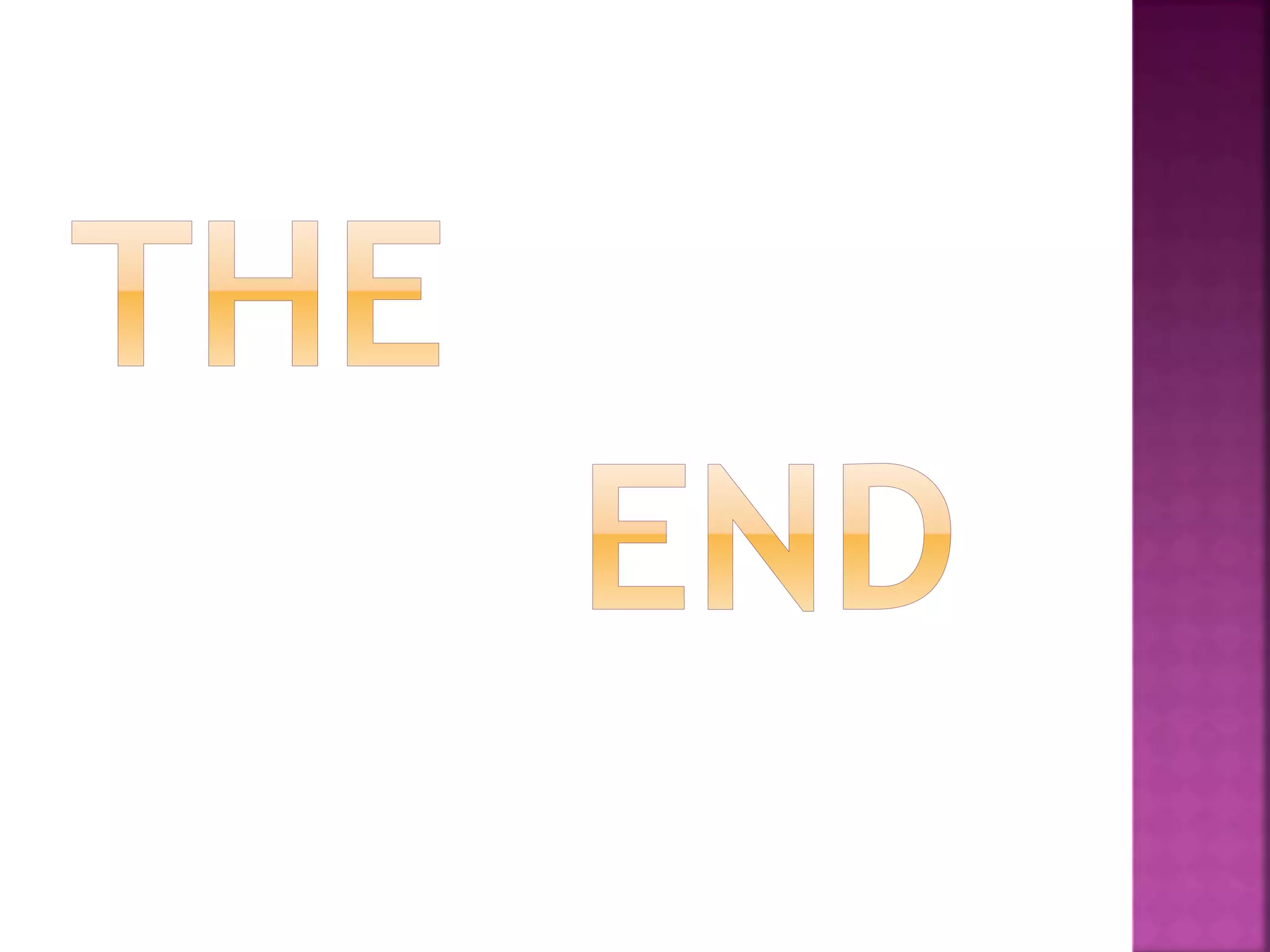The document discusses algorithms and their implementation. It explains the basic building blocks of algorithms - sequences, conditionals, and loops. It then provides an example of converting a decimal number to binary using pseudo code, a flowchart, and actual code. The document also discusses advantages and disadvantages of flowcharts and pseudo code.
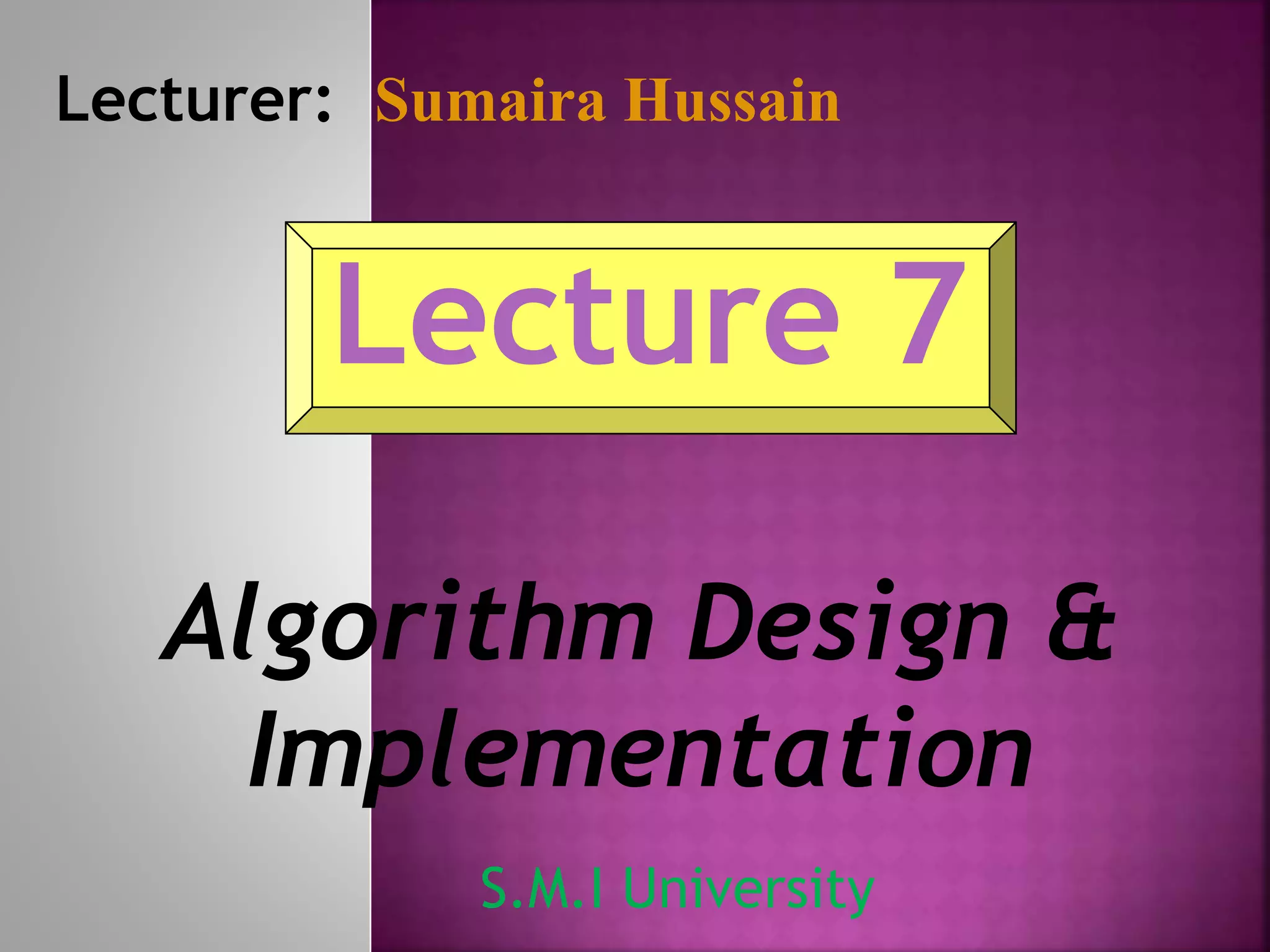
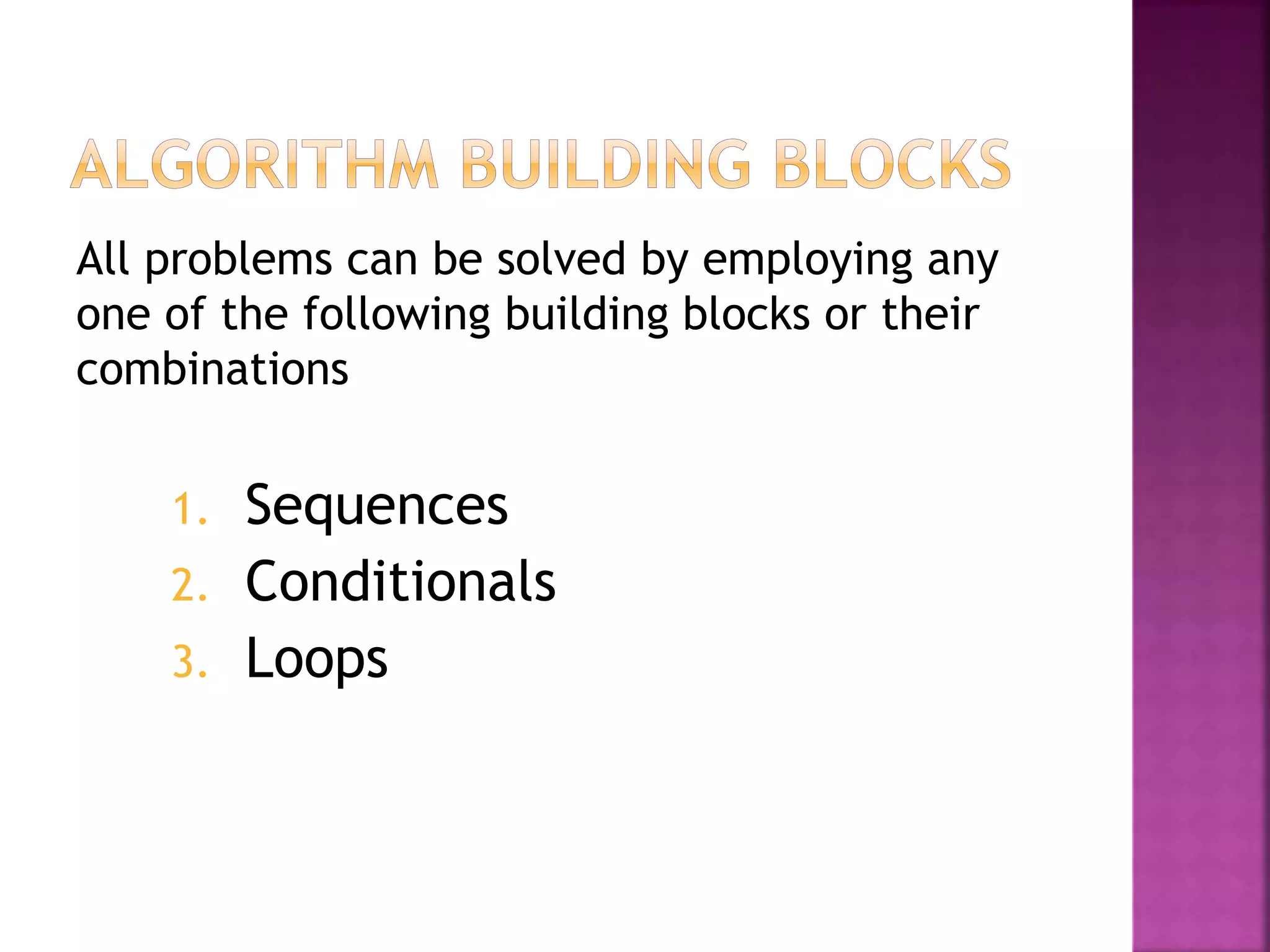
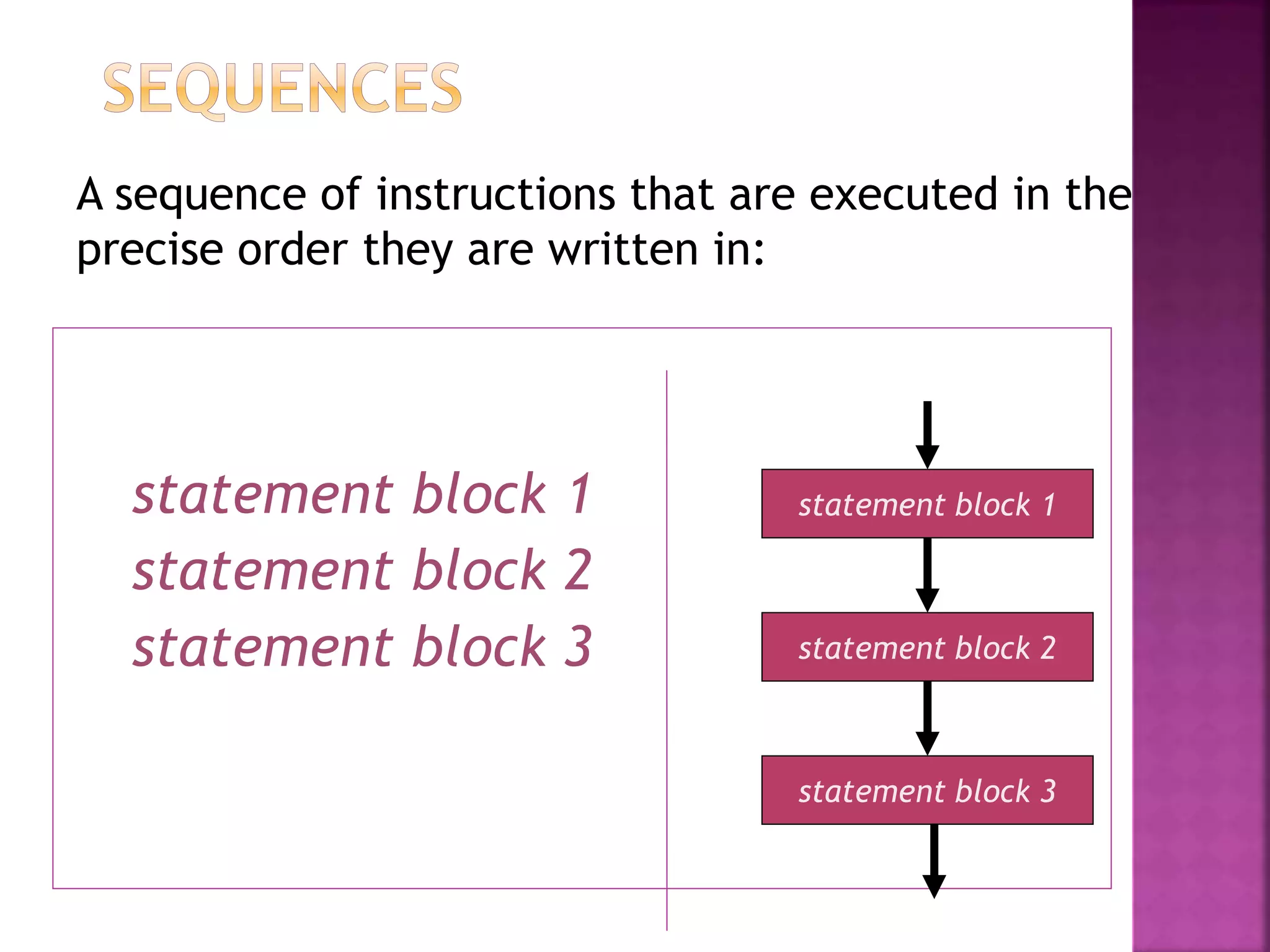
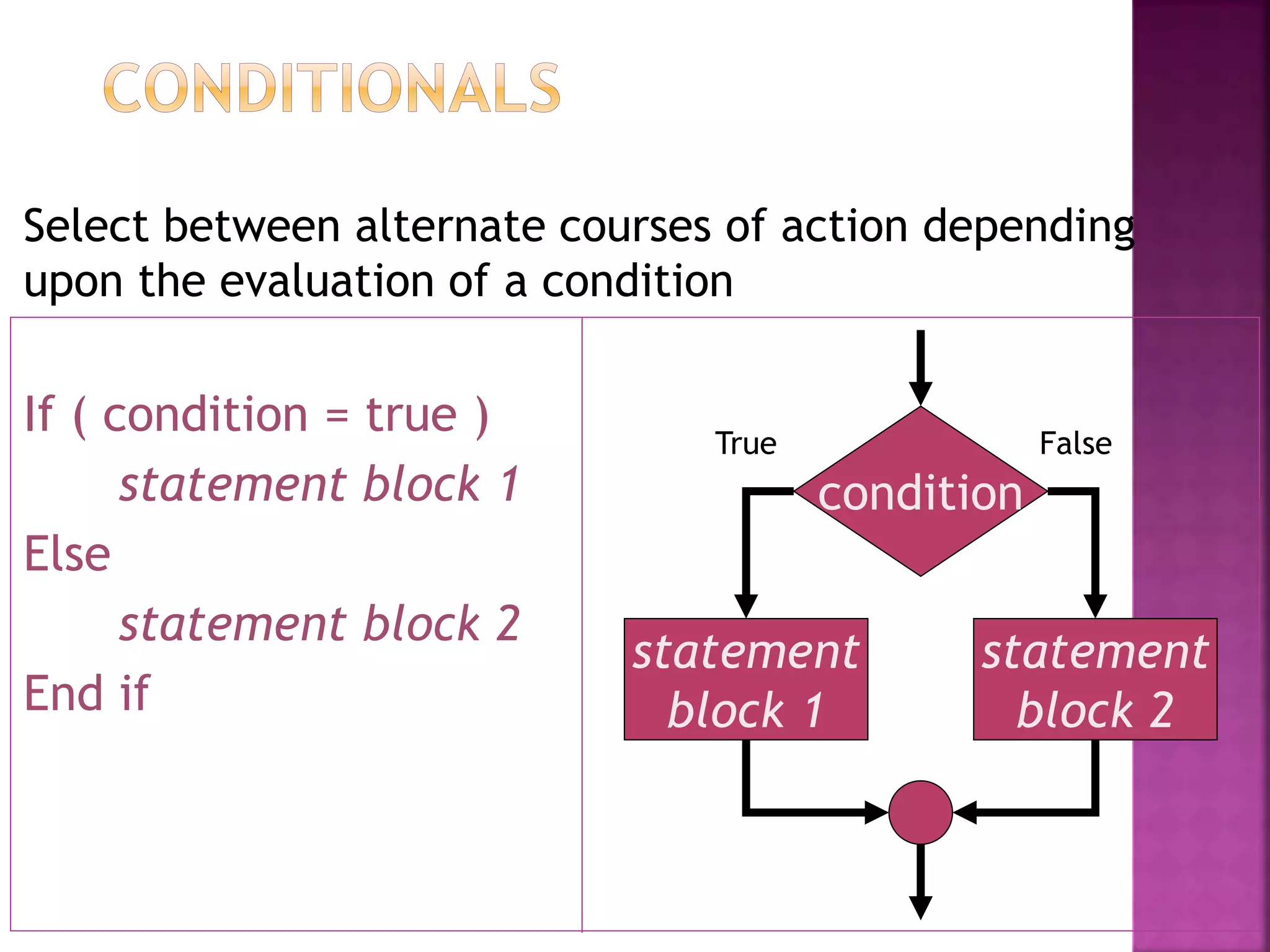
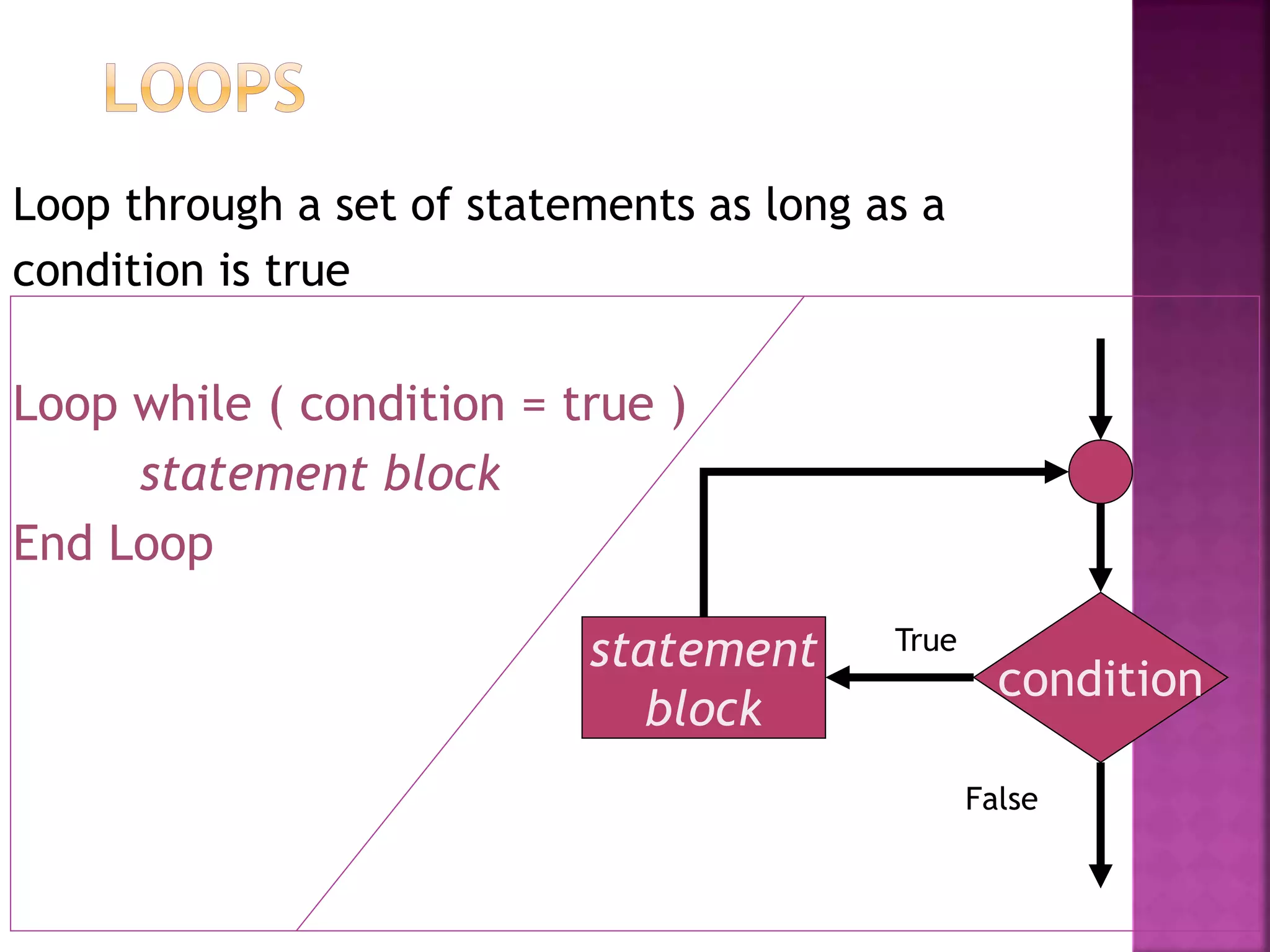
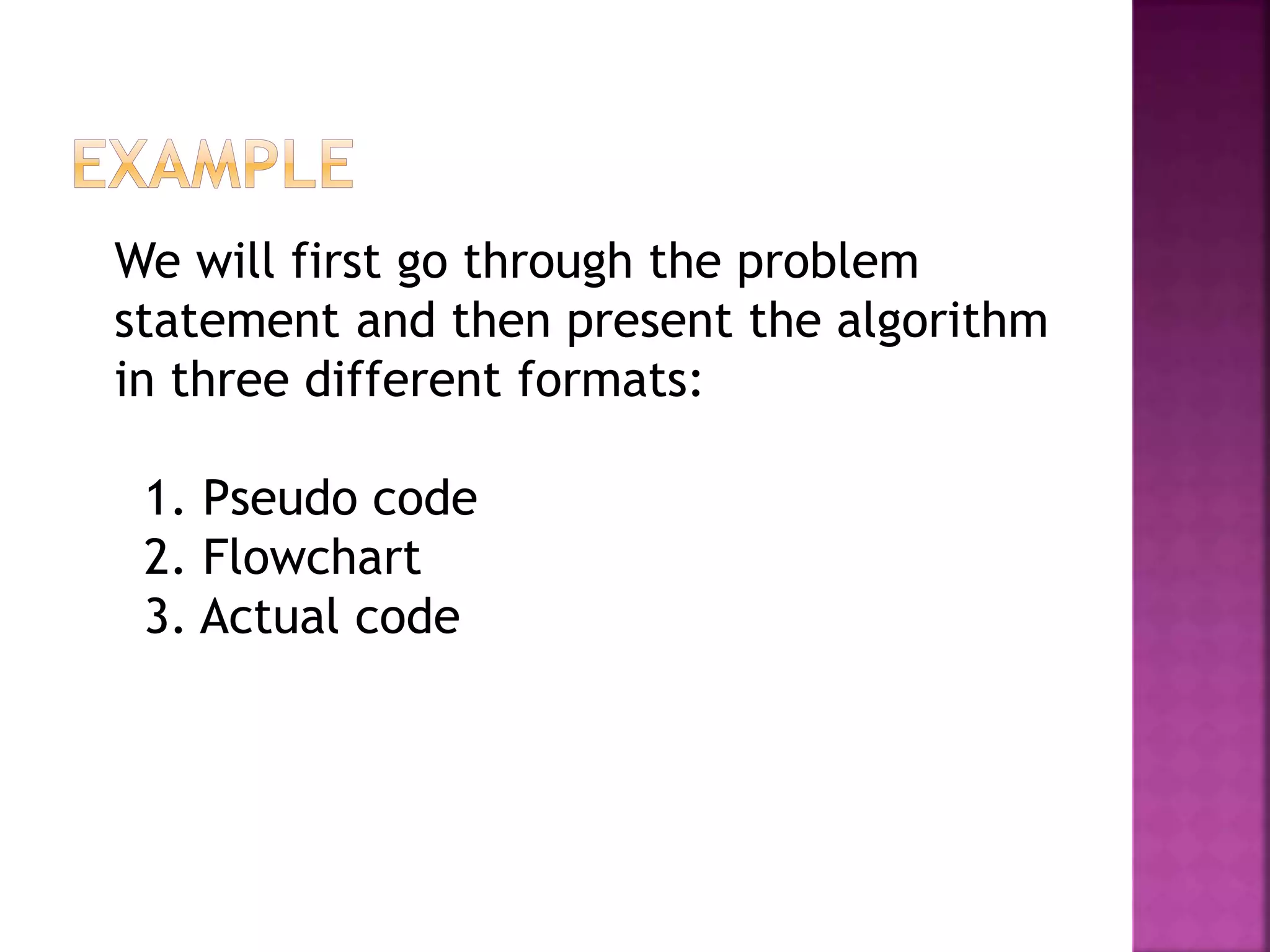
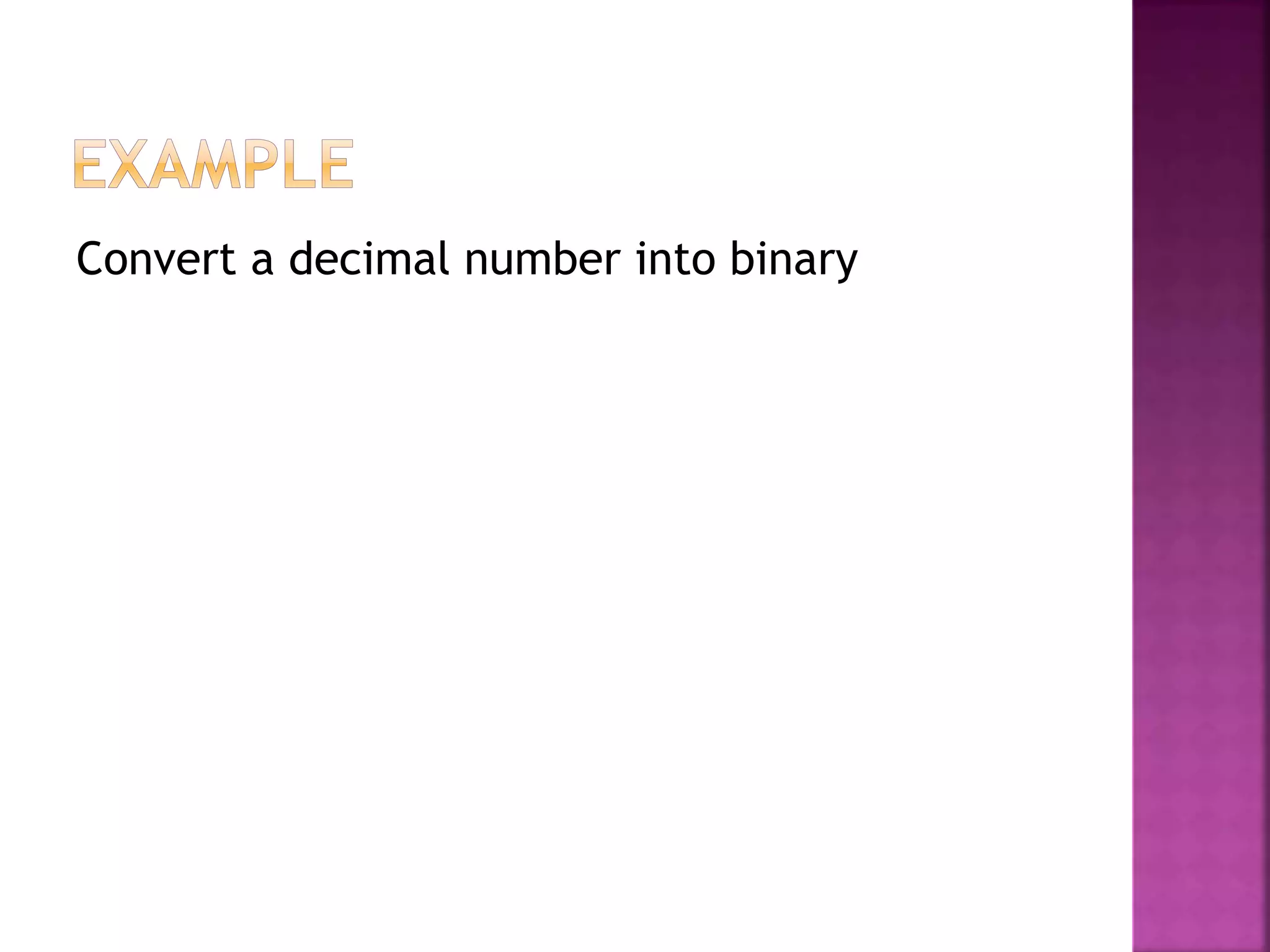
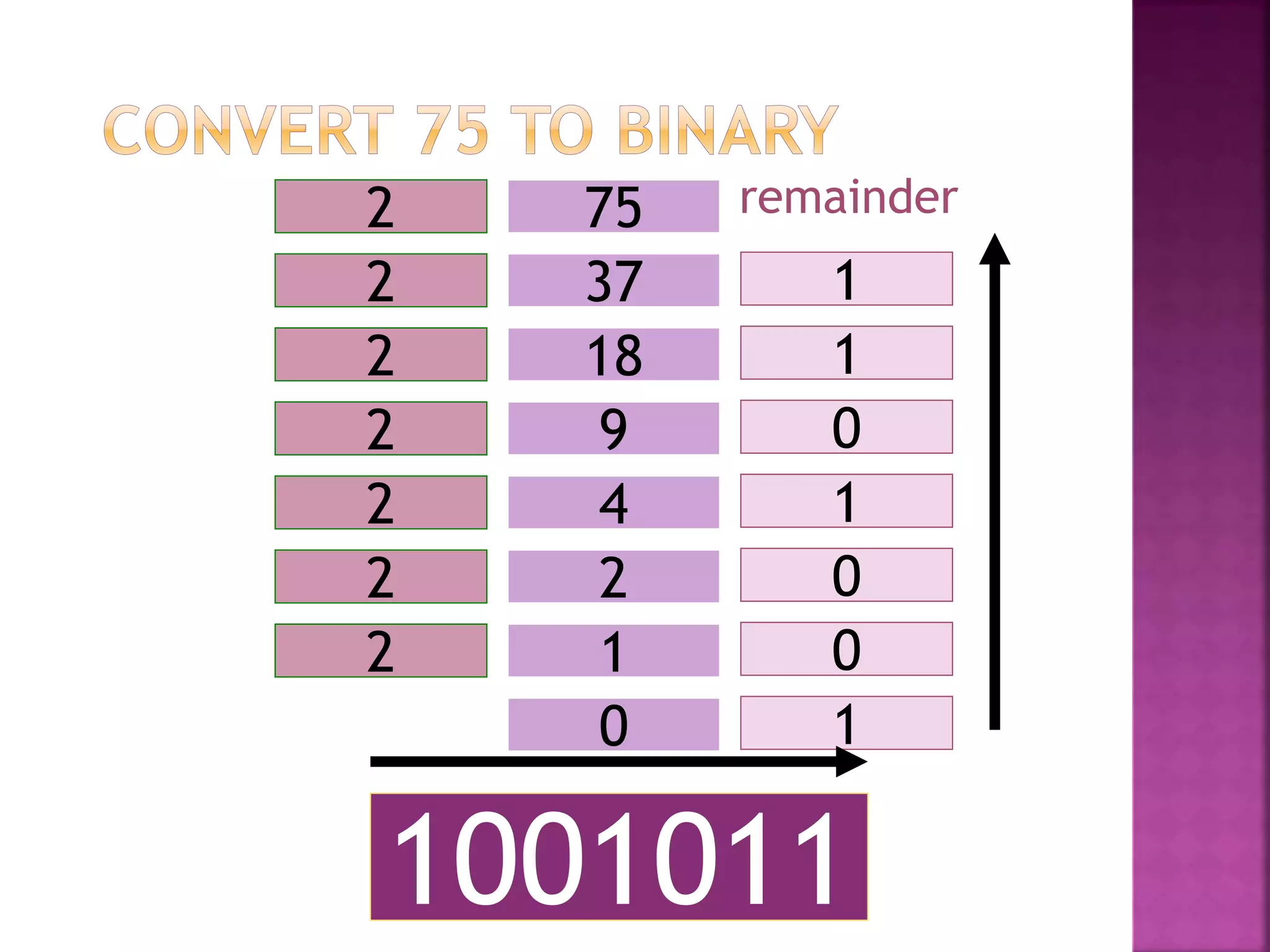
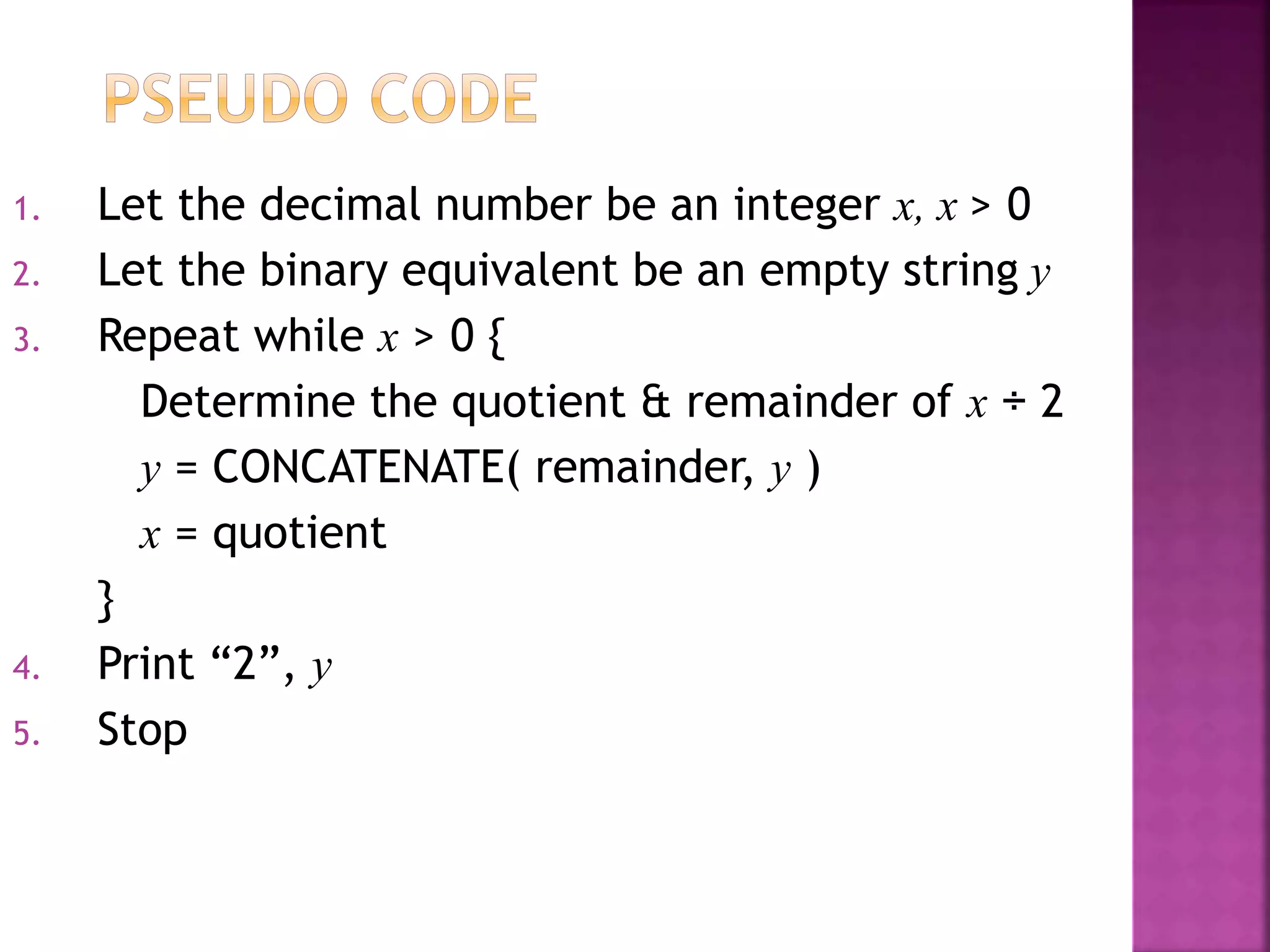
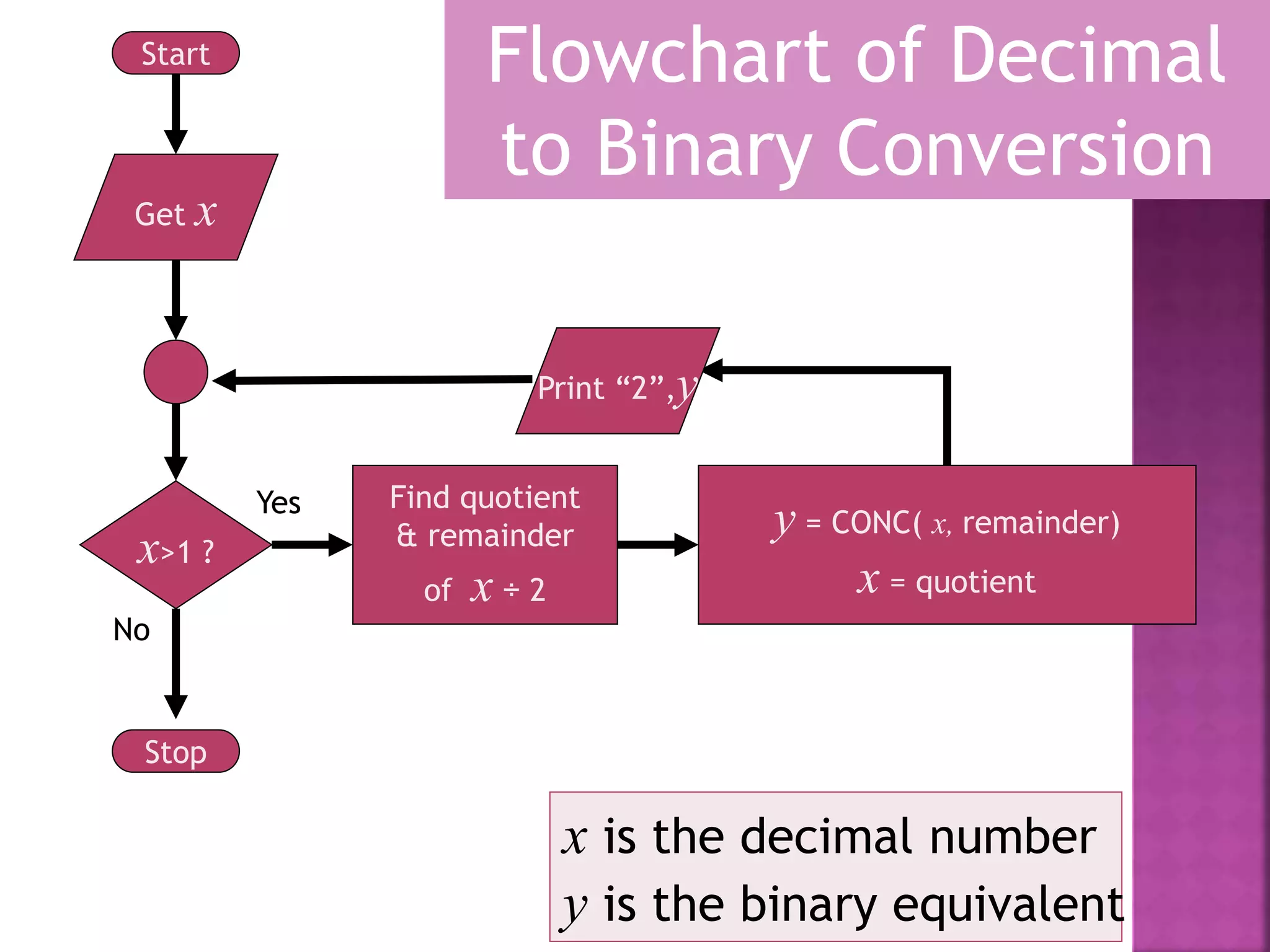
![#include<stdio.h> int main(){ long int decimalNumber,remainder,quotient; int binaryNumber[100],i=1,j; printf("Enter any decimal number: "); scanf("%ld",&decimalNumber); quotient = decimalNumber; while(quotient>1){ binaryNumber[i++]= quotient % 2; quotient = quotient / 2; } printf("Equivalent binary value of decimal number %d: ",decimalNumber); for(j = i -1 ;j> 0;j--) printf("%d",binaryNumber[j]); return 0; }](https://image.slidesharecdn.com/iclecture7-160111194501/75/Algorithm-Design-Implementation-11-2048.jpg)
